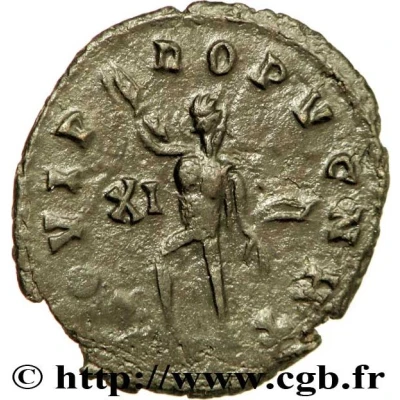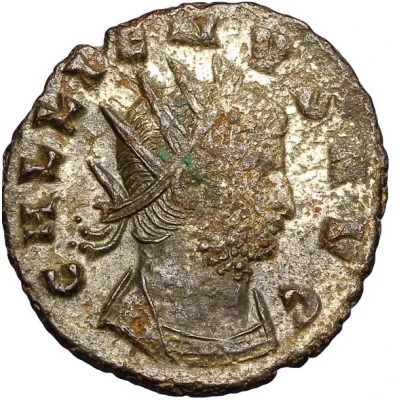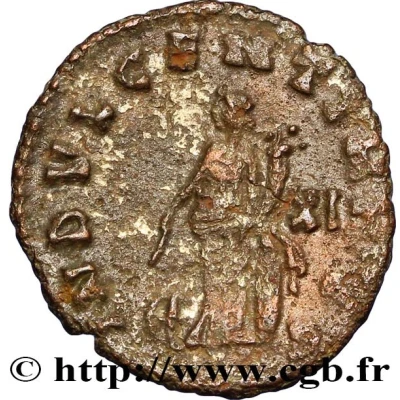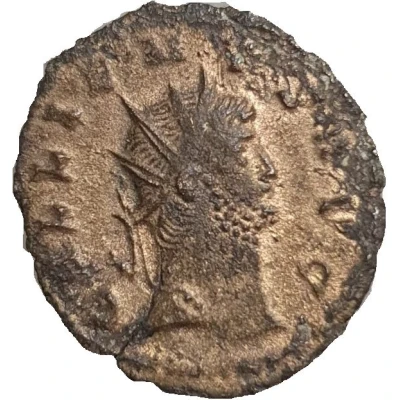


© CGB
Antoninianus - Gallienus IOVI PROPVGNAT; Rome
| Silver | 3 g | 22 mm |
| Issuer | Rome › Roman Empire (27 BC - 395 AD) |
|---|---|
| Emperor | Gallienus (Publius Licinius Egnatius Gallienus) (253-268) |
| Type | Standard circulation coin |
| Years | 265-266 |
| Value | Antoninianus (1) |
| Currency | Antoninianus, Reform of Caracalla (AD 215 – 301) |
| Composition | Silver |
| Weight | 3 g |
| Diameter | 22 mm |
| Shape | Round (irregular) |
| Technique | Hammered |
| Orientation | Coin alignment ↑↓ |
| Demonetized | Yes |
| Updated | 2024-10-05 |
| Numista | N#44880 |
|---|---|
| Rarity index | 86% |
Reverse
Jupiter, standing left, head right, nude except cloak flying behind, brandishing thunderbolt in right hand.
Officina mark in left field.
Script: Latin
Lettering:
IOVI PROPVGNAT
XI
Translation:
Iovi Propugnator
(To Jupiter the Protector)
Comment
Both Cohen#382 and RCV#10244 include varieties with officina marks IX (9) and X (10) while RIC only lists officina mark XI (11). Cohen#382 also include varieties without officina mark.Cohen differentiates the variety with type A bust under reference #384.
Interesting fact
The Antoninianus coin was issued during the reign of Gallienus, who was the Roman Emperor from 260 to 268 AD. During his reign, the Roman Empire was facing numerous challenges, including invasions by barbarian tribes and internal conflicts. Despite these challenges, Gallienus was able to maintain the empire's stability and issue coins like the Antoninianus, which were used for trade and commerce. The coin's design features the image of Jupiter, the Roman god of the sky and thunder, on the obverse (front side), while the reverse (back side) shows the image of Gallienus himself. The inscription "IOVI PROPVGNAT" on the reverse translates to "Jupiter, protector of the family," highlighting the importance of the Roman pantheon in the empire's culture and religion. Overall, the Antoninianus coin is an interesting piece of history that provides insight into the Roman Empire's economy, religion, and political landscape during the 3rd century AD.



